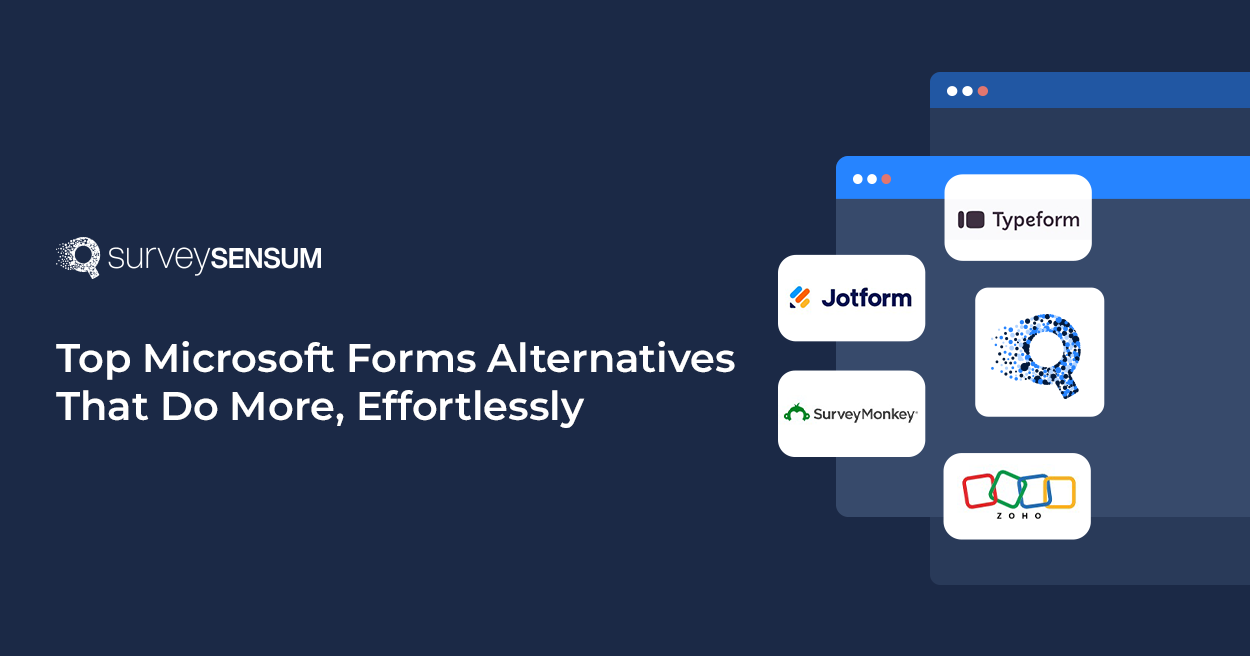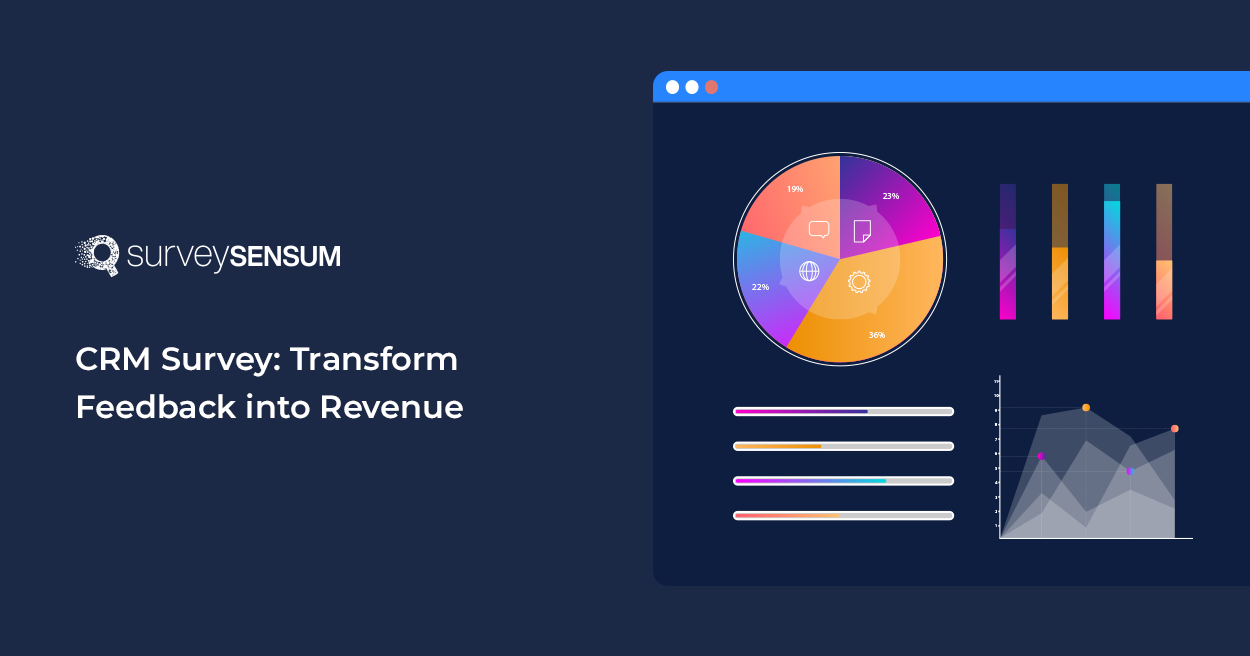
You put in a lot of effort in creating an engaging survey. All with the right questions, launch it at the right time, through the right channels. Yet the response rate you get is lower than anticipated.
Why is that?
The reason is non-response bias.
It occurs when respondents are unwilling or unable to respond to your surveys, creating a gap between anticipated responses and reality. And let me tell you, it is as bad as any other survey bias.
So, let’s explore the impact of non response bias, its root cause, and strategies to reduce it. But first, let’s start with a non response bias definition.
What is Non-Response Bias?
Non response bias refers to a type of survey bias that occurs when respondents refuse to or are unwilling to respond to your survey which can lead to data distortion. This gap between respondents and non-respondents may lead to the gathering of inaccurate data that doesn’t truly reflect the population’s overall view.
For example, if customers with lower satisfaction are less likely to participate in a customer feedback survey, the survey’s results could inaccurately skew positive.
While the reasons for this bias to occur can vary from person to person, some popular reasons include asking for sensitive information, approaching through the wrong channel, including too many questions leading to survey fatigue and abandonment, and many more.
So, let’s discuss this in detail.
What Causes Non-Response Bias?
Non response bias happens due to multiple reasons that affect the respondents’s ability or willingness to participate in the survey.
Here are the top reasons for it to happen.
1. Making Your Surveys Feel Like A Tarantino Movie: More often than not, long and complex surveys are the main reasons for respondents abandoning the survey. An ideal survey length should be between 10-14 minutes with 7-10 questions. Anything beyond this will likely cause survey fatigue in your respondents, creating a disinterest and abandonment of the survey.
2. Too Close For Comfort: No one wants to spill their guts over a survey and that’s another reason for non-response bias – asking questions that are too personal. Your respondents might be reluctant to answer questions on certain personal topics like health, finance, relationships, etc. Fear of judgment or privacy concerns can drive lower participation rates in these areas.
3. Ignoring Survey Timing: Everything has its own time and the same goes for surveys. When surveys are sent at inconvenient times or during busy periods, they are often ignored, especially by those with demanding schedules. This can inadvertently skew the response pool to include only those who have more flexibility.
4. What’s In It For Me?: Your survey should be relevant to your customer’s experience or have value in it. If the survey doesn’t feel applicable to respondents or lacks incentives, they may not see the value in participating.
For instance, a customer who has had limited interaction with a company may feel the survey isn’t relevant to them.
The reasons for this type of bias are clear but why is it a concern for businesses? Why should you pay attention to it? Let’s see.
Why Is Non Response Bias a Problem?
You must be thinking, so what if some respondents don’t answer your survey, the rest have and you can easily extract actionable insights from the ones that did provide their feedback, right? WRONG.
When certain parts of your customers choose not to respond to your survey or are unable to answer, their unique perspective is excluded, causing the end result to skew toward the views of those who did respond.
For example, a SaaS-based company recently added a new feature to their app and wants to understand customer experience with it. Now, if enough users don’t answer the survey it creates a gap in the survey data which deters you from getting the full picture. Or only users with a positive experience respond again, deterring you from gaining insights into key pain points and issues. As a result, they miss opportunities to address customer pain points, which could impact retention and future growth.
For businesses, non response bias creates issues like flawed customer feedback, unaddressed pain points, or missed opportunities to improve customer experiences based on actual needs and preferences.
Avoid errors and biases in your research with SurveySensum. This tool will do the hard work for you – from creating customizable surveys to sending them through relevant channels to testing them properly before sending them out – it has your back!
Now you understand the impact of ignoring non response bias so the next obvious step is to understand how to avoid it. Let’s find out.
How To Avoid Non Response Bias?
So, I have pulled up 6 best practices that you can follow to avoid non response bias in your next survey and boost your survey response rate while gathering relevant customer feedback.
1. Short and Sweet Surveys
Let’s start with the basics. Simplicity is the key and the sooner you realize that it will increase your chances of eliminating non response bias, boost your response rate, and increase your chances of gathering relevant data.
So, what’s the ideal length you should focus on? Well, research suggests that the sweet spot for survey length is 10-14 minutes and 7-10 questions. This should be enough for you to get relevant and actionable insights from your customers, all while maintaining their interest and lowering abandonment rates.
2. Make Surveys Relevant For Respondents
Nowadays we don’t even pay attention to the news that’s not relevant to us, so how can you expect your customers to answer survey questions that are not relevant to their experiences or don’t have any value to them?
So, ask questions to the right audience. For example, only a certain segment of your customers use a particular feature in your app, yet you keep sending surveys to your entire customer base, now that’s going to result in lower response rates and relevant data. So, make sure your surveys are relevant to your respondent’s experiences.
Also, add a little value for them by offering them some type of incentives like discounts, gift cards, or exclusive offers. These incentives can motivate even less engaged participants to complete the survey.
3. Send Reminders (But Be Subtle About It!)

More often than not, customers forget about your surveys so it’s better to send reminders to them. However, this can become a friction point if not handled properly. Sending too many reminders or sending them without proper gaps can also be irritating and might motivate the recipient to unsubscribe or provide relevant information just to get over it.
A gentle nudge increases visibility and improves response rates, especially if sent at strategic intervals. Now, if you are confused about how to maintain gaps, well there are tools for that.
For example, with SurveySensum’s customer feedback tool, you can easily set survey reminders and with the help of their CX consultation, you can get advice on the gap you need to maintain between each reminder.
4. Make Privacy a Priority
One of the biggest reasons for non response bias is not maintaining data privacy and asking too personal questions. This will motivate anyone to abandon the survey or give irrelevant information not to reveal their personal information.
So, emphasize confidentiality and explain how responses will be used. When respondents feel their data is secure, they are more likely to participate, even on sensitive topics.
5. Timing is Everything
Sending surveys at the wrong time can create more problems than benefits. Avoid sending surveys during high-stress periods, holidays, or late hours. Instead, choose times that suit your audience’s lifestyle, like mid-morning on a weekday for professionals or weekends for casual users.
→ Read our blog on Survey Timings to understand the different timings for different types of surveys.
6. Close the Feedback Loop
This is something many businesses ignore. You gather insights, act on them, and make changes but what about communicating it back to your customers, the ones who provided you the feedback in the first place?
Once you have assessed the feedback and taken relevant action to address the issues, close the feedback loop by communicating back to the respondents, letting them know their input led to specific actions. This follow-up demonstrates a commitment to improvement, enhancing trust and engagement.
Conclusion
In the end, nonresponse bias can really skew survey results, making data less reliable. So, start paying attention to it and you might get that jump in your response rate you have been praying for.
However, to get the most out of your feedback efforts, tools like SurveySensum are invaluable. With advanced features to drive higher response rates and reduce biases, SurveySensum makes it easy to get a fuller, more accurate picture of customer sentiment. That way, you get feedback you can truly act on – without missing critical insights.
















